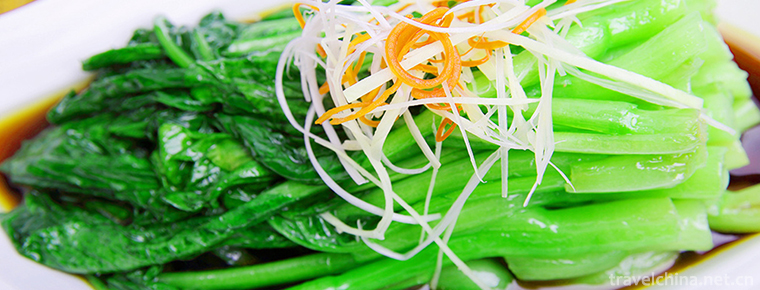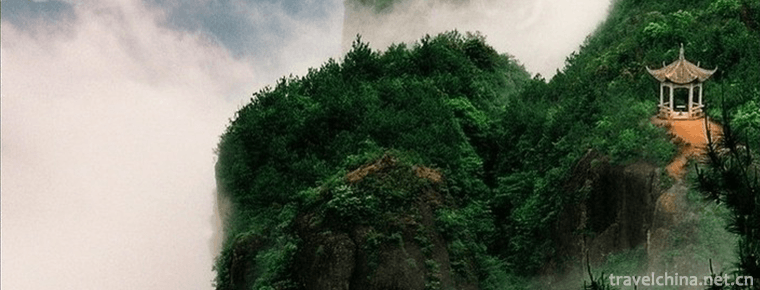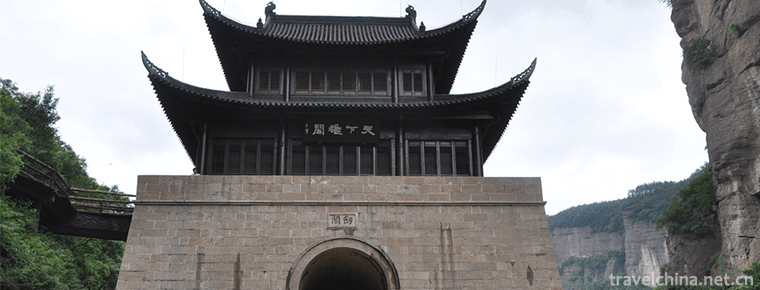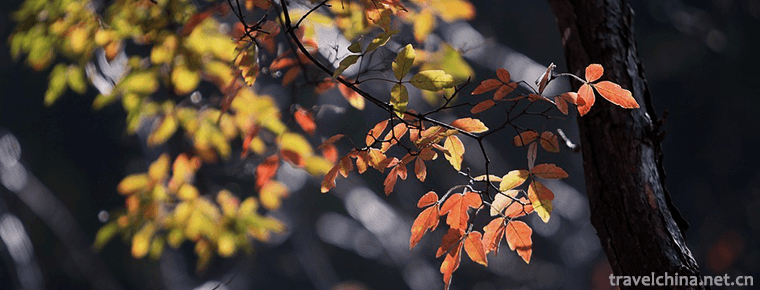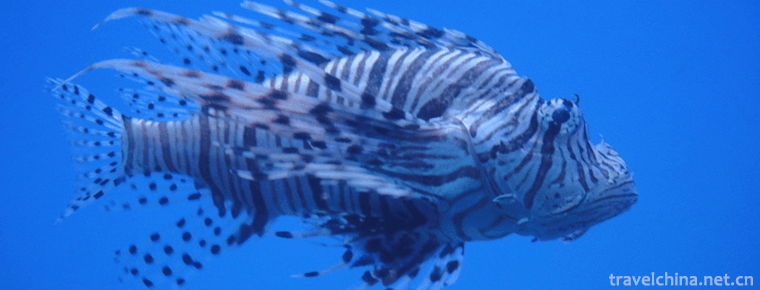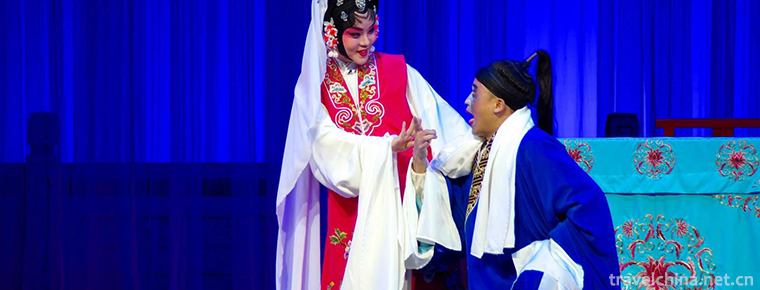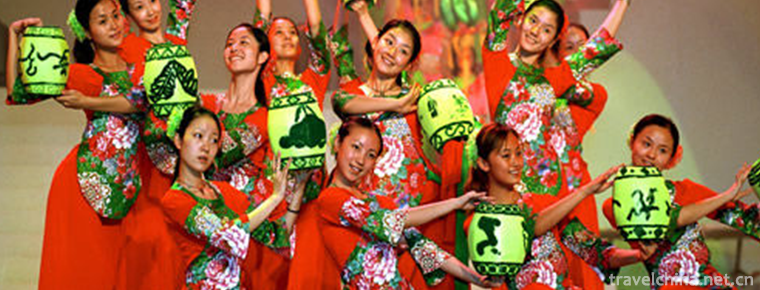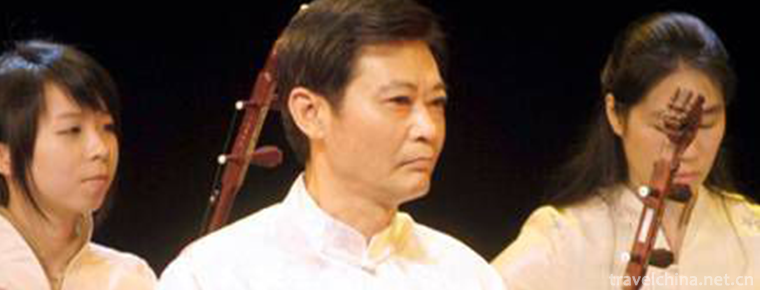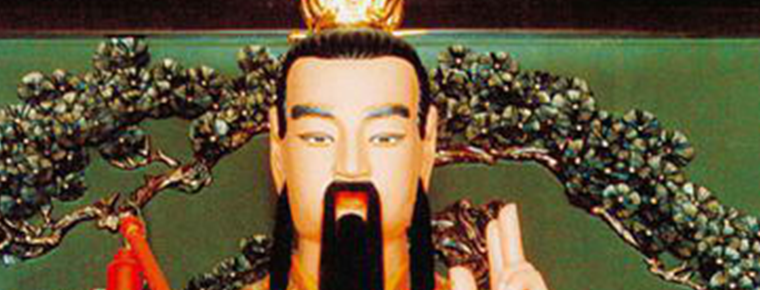Lingyun Mountain Scenic Area
Lingyun Mountain Scenic Spot is located in Gaoping District of Nanchong City, with an area of 20 square kilometers and a total investment of 300 million yuan. The scenic spot is dominated by Lingyun Mountain, Baishan Mountain and Tushan Mountain, including 11 villages along the borders of Laojun Town, Qinglian Town, Xiaofo Town and Wanxiang Township. Ten thousand mu of pines and cypresses in the scenic area are verdant and lush, with clouds surging around the peaks of Lingyun Group, and the water of the lake ripples beneath the mountain, with the ancient temple bell ringing in the middle of the mountain. The scenery is beautiful, the climate is pleasant, and the seasons are like spring. What is more unique is that the natural scenery of Lingyun Mountain, such as Zuo Qinglong, Right White Tiger, Former Suzaku, Post-basalt, coincides with the mysterious opportunity of "Four Images and Five Elements" called by ancient Chinese geomantic astronomy, and forms the wonder of scenery in the traditional geomantic pattern, which can be regarded as a rare living specimen of geomorphology in the field of Oriental geomantic geography and public opinion.
Main attractions
The traditional culture embodied in Lingyun Mountain grotto art is praised as a masterpiece representing the essence of Oriental culture. Lingyun Mountain, which integrates Confucianism, Buddhism, Taoism and culture, is very consistent with people's spirit of seeking roots and ancestors and exploring the origin of Chinese culture. Building Lingyun Mountain's cultural and ecological landscape and building Lingyun Mountain into a base for displaying national cohesion and traditional culture and patriotism education are worthy of our ancestors, contributing to the great cause of the present age and the world stage for displaying the broad and profound Chinese civilization.
Since Lingyun Mountain Scenic Spot was developed, Nanchong and Gaoping District governments have taken this scenic spot as a leading project to revitalize the city's tourism industry and improve the tourism economic index. Require "high-grade, big-handed" to create the scenic spot into the Nanchong Jialingjiang cultural tourism line boutique.
sanqing hall
Sanqing Palace is a landmark building of Taoism. It is named for the three Muslims of Taoism. The original hall was rebuilt in 2001, covering an area of about 6,000 square meters. The gate is a double-decked carved green apple wood in Yunnan Province; the front hall has a 9-meter-high central sculpture of Lingbao naivety, Yuqing Yuanshinai naivety, Taiqing moral naivety, around each sculpture has a 5-meter-high 12 golden fairy, the murals and murals inside the hall are Taoist classic stories, cultural background patterns; the rear hall has a 5-meter-high statue of the Post-Three Muslims, with different looks and lifelike. On the right side of the Sanqing Palace, a huge stone on the lake is inscribed with the poems chanted by Zhang Sanfeng, the Taiji master of the Ming Dynasty, when he visited Lingyun Mountain: Lingyun is a beautiful mountain in Shushan, and Qinghua is a distant vulgar place in Shumu. In the smoke of Jiuding, Lufeng roars, and Xianyin is not heard in the world. It can be seen that Lingyun Mountain had a very high position in that year.
Natural Sleeping Buddha
Four phases and five lines
Like a tortoise carrying heavy loads, this tortoise pattern, turtle head, tortoise eyes, turtle back, scales and plaques, life lines clear, and symbolizes longevity and auspiciousness of the tortoise. Look, there are grooves and caves filled with cement in the middle of the back of the tortoise. This is what the mountain people wanted to exploit this stone to build houses in the early 1990s. They fired and exploded stones and left behind. At that time, they were all miraculously dumb artillery, leaving behind the tortoise stones we see today. It's amazing!
Dazidong is a monk's tomb excavated in Hongzhi 14th year (1501) of Daming. It is the head of the tortoise. The real military officer is on the back of the tortoise. The two hill beams on the left side of the mountain road are the back legs of the tortoise, so the mountain is called Xuanwu Mountain. The front left side of the mountain is Qinglong Mountain, the longest part of the mountain is 330 meters, the widest part is 33 meters, surrounded by cliffs, like a Qinglong worshiping to the tortoise. There are many boulders in the mountains, some like Panlong, some like Wolong, some like dragon whiskers, thousands of forms, quasi-vivid, but also implies the mystery of Lingyun Mountain in the March 3 Dynasty. In front of the right side of the mountain is Baihu Mountain, watching in front of the lower side of the mountain, but saw a crouching tiger standing in the barren pine forest, a gust of pine wind blowing, like the sound of tigers whistling. In front of it is Zhuque Mountain, which is about 2 kilometers long. The shape of the mountain is like a big roc. It looks at the distant mountains and has the potential to spread its wings.
Experts and scholars who study geomancy say that the mountain topography of Lingyun Mountain is left Qinglong, right Baihu, former Suzaku and post-basalt, which are all in one place (ancient Chinese geography considers that Qinglong, White Tiger, Suzaku and basalt are all geomancy treasures). Professor Wang Mingyuan of West China Normal University, after visiting Lingyun Mountain, said in his article "The First Landscape of the World's Fengshui": In terms of ancient geography, Lingyun Mountain has the hero of Tenglong and Crouching Tiger, Suzaku's basaltic beauty, symmetry and moderation, each of them occupies the standard. For thousands of years, the ideal geomantic omen pattern is the reality in front of us. It is even more wonderful to gather gas in the center of the four phases (300 meters in front of the Sanqing Palace, there is an infinite energy field in the back soil of the five elements, which is the central part of the four phases and five elements. There are echoes shouting around here, and there are no mountains and deep valleys around it. This wonderful phenomenon is extremely rare. Now we are going to build Tiangu Bagua Tai). First, turn one into four, amazing! Professors Ma Zhengping and Li Xiaobo of Sichuan Normal University said: previous studies on geomantic omen with four phases and five behaviors are the most ideal geomantic pattern, but they are legendary, abstract, ideal, in books, the four phases and five elements of Lingyun Mountain seen today are both physical and spiritual, which will become the study of Oriental Architecture geomantic omen and ancient geography in Colleges and universities. A living specimen of public opinion. The late Chairman of China Taoist Association, Master Fu Yuantian, visited Lingyun Mountain and said: Lingyun Mountain has four phases and five elements which are rare in the world. He suggested that Lingyun Mountain be built into a Taoist city.
As the geomantic omen theory of Chinese traditional culture, it is broad and profound, and very deep in Australia. Please ponder and study it slowly. Lingyun Mountain is a unique geomantic treasure land, so Lingyun Xiaoyun has the same work as Lingyun. It is probably the best interpretation of Lingyun World Spirit.
The true military officer of the Zhenwu Palace in Lingyun Mountain was built in the Qing Dynasty. On the wooden plaque, the word "true military officer" was written by Fu Yuantian, the late president of the Chinese Taoist Association. In the main hall, the sculpture is fully armed, wearing armor and holding a sword. It looks at the image of Zhenwu Master in front. There are ten Marshals in the left and right corridors. On the back of the main hall, there is a wall between Zhenwu Master and Cihang Zhenren. Laojun Pavilion is built on the top hill, with the shape of Eight Diagrams, carved beams and painted buildings, simple and elegant. The stone statues in the pavilion deduce Laozi's story of riding Qingniu West to Huahu. The eight stone pillars outside the pavilion are all reliefs of dragon-holding pillars with exquisite workmanship.
Every year from the first day of March to the third day of the lunar calendar, Lingyun Mountain Dao Guan holds a grand ceremony of Daoist banquet formation, which is grand in scale and spectacular in scenes. Hundreds of thousands of believers compete to worship each other, crowds are knitted and shoulder to shoulder. It is popularly known as "March 3, Chaolingshan". At the end of the festival, five small bags of salt, tea, rice and other cereals were packed in paper, and then tied to five long ropes under the banner to rise to the clouds. After several days of bathing, incense burning and mouth clearing, more than 10 highways lined up to offer sacrifices to the heavens, chanting for the true Wuzu Master, resolving adversity in the face of excessive fighting, sensing heaven and earth, twisting the long ropes into an unsolvable one, which can predict the year. The strange knot of the scenery.
Lingyun Buddha
At the edge of Lingyun Lake, which is rippling with green grass and trees, at the end of Lingyun Square, the grotto Buddha chiseled from the cliff of Yimaweipo is Lingyun Buddha. It is the statue of Amitabha Buddha. It is the most famous landscape of Lingyun Mountain. When monks and believers meet, they often say "Amitabha Buddha" with both hands, which is a kind of blessing, wishes and greetings. Why? It is said that Amitabha Buddha is the leader of Buddha and the king of Buddha. The statue is 99 meters tall, 11 meters taller than the bronze statue of Gaoling Mountain, 88 meters taller than that of Wuxi, the world's largest Buddha. The shoulder and head of the Buddha are more than 30 meters, equivalent to 10 stories high. It can be said that the Buddha is a mountain, that is, a Buddha.
Lingyun Buddha is a rock cliff grotto statue, which is 12 meters away from the grotto edge. It can drain, isolate moisture and ventilate scientifically, and prevent the aggressive weathering of the Buddha. Looking up at the Buddha in the square will make you feel like you are looking up to the clouds. There are several observation points on the left and right sides of the Buddha statue and nearby hilltops to facilitate visitors to worship and worship.
Rosefinch mountain
Zhuque Mountain is located in front of Lingyun Mountain, like a flying roc. Around the mountain, there are statues of recumbent Buddha (Sakyamuni Nirvana), Avalokitesvara 33 incarnation and 500 Arhats (part) in stone carvings.
Lingyun lies in Buddha, also known as Sakyamuni Nirvana. Born in 623 B.C., Sakyamuni is said to have been able to walk seven steps a week and show seven lotus flowers at his feet. He looks around with one finger in the sky and one finger in the earth and says to himself, "Heaven and earth, only I respect you". After dissatisfied with the unequal social phenomena, he left the palace and realized the Tao at the age of 35. The holy name was Sakyamuni Buddha. He preached Buddha Dharma from Chengdao to Nirvana at the age of 80. The grottoes, 72 meters long, are the longest stone carved statues in the world. The carving content is the story of Buddha's silence, which consists of three parts. On the left is Sakyamuni Nirvana, entering the highest immortal realm, with a kind face and natural expression. At the golden section point, a huge Bodhi Tree connects the upper and lower grottoes, leaves embellish the whole picture, and divides the picture into two parts, which not only enriches the content of the picture, but also solves it well. On the right is the eight disciples of Sakyamuni who devoutly praised the master through three liberation gates, with a solemn manner and sincere heart.
Avalokitesvara 33 incarnated grotto art statues, each incarnated is a classic Buddhist story. Buddhism has various names of Buddha and Bodhisattva, among which the people most deeply reflect the Guanyin Bodhisattva. Guanyin Bodhisattva is the representative of great mercy in Buddhism. When Guanyin first came to China, it was male, and then gradually evolved into female. Her main task in the Western Paradise World is to assist Amitabha Buddha to take over all living beings and to assist Sakyamuni in enlightenment in the Bosa World, that is, in the real world. Guanyin Bodhisattva can turn out many wonderful features and can say infinite secret magic spells. All beings can be fearlessly fearless by their wonderful looks and magic spells. Her main body is the melting and pure Baojue Guanyin, which has 32 incarnations for all living beings. Each stone statue is 3-5 meters high, proportionally proportionate, plump, graceful and elegant, and has the legacy of the flourishing Tang Dynasty.
Five hundred arhatic stone carvings (part) are distributed on the southern side of Zhuqueshan. The grottoes are 3-5 meters high and 2-4 meters high. Arhat is the ideal highest fruit position in Hinayana Buddhism. There are three meanings, one is to kill thieves, the other is to supply, and the third is to live without life. All the Arhats are independent, mutually responsive, dynamic and static, and integrated. Some show strict and compassionate personality; some are holy and wise; some are romantic; some have a quiet manner; some are simple and lovely; some have deep connotations; some can not laugh or cry. It seems to tell people that although Luohan is extraordinary and free from worldliness, he does not suffer from the reincarnation of life and death, but also has joy, anger and sorrow, and the western world is not a perfect paradise.
Looking at the direction of Baishan and Mayan Mountain in Lingyun Mountain, we can see two natural sleeping Buddhas stretching from the ridge. The sleeping Buddhas in Baishan Mountain are about 2 kilometers long, and the sleeping Buddhas in Ma Yanshan Mountain are about 1.5 kilometers long. They are connected with each other and face north and south. They are legendary manifested by Buddha. Their orientation is consistent with the direction of Buddha's silence at that time. Compared with the sleeping Buddha in Leshan, it is more peaceful and natural. More amazing is that since the Tang and Song Dynasties, the great monk Dade built a temple on the head of the two sleeping Buddhas to meditate and enlighten.
Baishan Temple
Baishan Temple in Lingyun Mountains has a history of more than 1800 years. There are several large and small temples built around and on top of the temple. There are more than 30 ancient rock tombs, relics and steles carved in Han, Tang and Song Dynasties. Baishan can be said to be a wonderful mountain: Baishan Temple and Ma Yan Mountain in Lingyun Mountain are like two sleeping Buddhas; Baishan Lake is like two male lions; Baishan Mountain is like a side portrait under Zhuqueshan Mountain, which is "changing scenery step by step". Tourists are surprised to call him "Lion body portrait". Ming Dynasty Prime Minister Chen Yiqin (Gaoping Qingju, whose father and son are both scholars of Wenyuange University and Prime Minister of the current dynasty) once visited Baishan Temple and wrote a poem: "Around Fanyu far away from smoke, idly meditate alone in spring." Heaven and earth are ancient mountains, and the Han and Tang Dynasties have lasted for thousands of years. Beyond the crowing of birds and bells, the path is covered by the shadow of Feihua Temple. There is no such place to meditate in order to get rid of misery in the world.
The Golden Light Tathagata Hall, built for rebuilding, has a flying ridge, a winding eaves, a Xieshan Dougong, a magnificent momentum and a flourishing Buddha spirit. In the hall, two golden light Buddhas and Vetu Bodhisattvas, which are invited from Myanmar, are over 3 meters high and weigh about 5 tons respectively.
Baishan Temple is a cliff on three sides. On the cliff, there are rows of ancient stone cliff tombs and relics pagodas. This is a clear place for the great monks to meditate peacefully since the Han and Tang Dynasties. The entrance of the cave is inscribed with the sentence "I am here in the tower, where he is going". The sentence contains infinite Zen meditation.
Grotto Art City
Ma Yanshan used to be the most prosperous place in Baishan and the most magnificent and dense temple. Unfortunately, it has disappeared. However, the rubble, foundation stone, stele and incense burner unearthed nearby can be used to observe the grand occasion of that year. Now, preparations are under way to restore the grand hall. There are magnificent grotto art statues carved on the steep rocks north of Ma Yan Mountain. The grottoes are 9-20 metres high and 7-16 metres high. They are the artistic statues of the three sacred Grottoes in the East, the three sacred Grottoes in the West, the golden light Buddha grottoes, the Huaguang Buddha grottoes, the Manjusri Bodhisattva riding a lion, the Puxian Bodhisattva riding an elephant, the Buddha hiding in the monk's land with tin sticks and lotus flowers, and the Guanyin Bodhisattva grottoms.
Lingyun Mountain Scenic Area has become a "green environmental resort" integrating tourism, catering, accommodation, entertainment, conference and business.
geographical environment
Lingyun Mountain Scenic Area is located in Gaoping District of Nanchong City. There are 11 villages across four townships: Laojun, Xiaofo, Qinglian and Wanjia. Located in the east longitude 106 10 20 106 15 00 north latitude 30 42 50 30 47 12 with a total area of nearly 20 square kilometers. The scenic spot is 10 kilometers away from the urban area of Nanchong and 4 kilometers away from the new airport of Nanchong. The three expressways from Nanchong to Chongqing, Chengdu and Guang'an, the expressway around the city and the Airport Avenue directly to the urban area intersect at the foot of Lingyun Mountain, which constitutes a prominent geographical advantage of convenient transportation in the scenic spot.
Geology and geomorphology
hydrologic condition
The water body of Lingyun Mountain Scenic Spot is mainly groundwater, namely fissure diving. Its water source system is atmospheric precipitation recharged vertically and discharged into valleys in the form of falling springs. The recharge area is consistent with the discharge area, with good alternating conditions and short cycle. More precipitation in summer and autumn, less precipitation in winter and spring. Water quality belongs to calcium bicarbonate freshwater. Mineralization degree is less than 1 g/kg, with 0.3 to 0.5 g/kg being the most. The existing Lake in the scenic area is Baishan Lake. Lingyun Lake, Xiaoxi Lake, Xuanwu Lake and Tushan Lake are being planned and constructed. At that time, beautiful natural scenery of forest sea, flower sea, cloud sea and bamboo sea will be formed. In addition, there will be two wells, two water towers and 15 tons of daily water supply in the scenic area.
land resource
Lingyun Mountain Scenic Area has an area of 20 square kilometers, equivalent to more than 30,000 mu, including 20,000 mu of woodland, 1,000 mu of wasteland and 9,000 mu of arable land. After 7,000 mu of farmland is returned to forests, the woodland area will reach 27,000 mu. Soil parent material is mainly Suining Formation, and there is a small amount of Penglaizhen Formation parent material at the top of the mountain. The altitude is more than 500 meters, and the temperature is low. It is suitable for forestry production and development of herbivorous livestock.
climatic conditions
Lingyun Mountain Scenic Area belongs to the middle subtropical monsoon humid climate area of Sichuan Basin. Its annual average temperature is lower than that of the valley Pingba, which is generally about 17 degrees centigrade. The temperature in August is the highest in a year, averaging about 28 degrees C, and the lowest in January, averaging 6.5 degrees C. In summer, the temperature varies slightly, and the relative temperature difference is generally between 6 and 8 degrees Celsius. In spring and autumn, the relative temperature difference is between 8 and 14 degrees Celsius. The maximum sunshine hours are in August, with a value of 219.7 hours and a minimum of December, with a value of 43.2 hours. Annual precipitation is over 1100 mm, of which the precipitation is more in summer half year from May to October, and less in winter half year from November to April. In agricultural regionalization, it belongs to low mountain warm water foot area, suitable for afforestation, fruit and silkworm development.
natural resources
The vegetation in Lingyun Mountain Scenic Area is well preserved and restored, mainly including subtropical coniferous forest, subtropical mountain broad-leaved forest, shrub and mountain meadow. The existing patches of cypress forest, alder mixed forest, pine forest, shrub forest, mainly distributed in Lingyun Mountain, Jiujie Longshan, Huanglong Mountain, Ma Yanshan and other places. Among them, common bamboos are cypress, Masson pine, alder, arid lotus, Tung oil, camphor, pear, peach, walnut, jujube, Cizhu, Nanzhu, cypress, prunella, etc. Wild fruit fungi include three-month bubbles, sorghum bubbles, sweet potatoes, beans and chickens, tricuspid fungi, horseskin bags, tungzi fungi, agaric fungi and Ear. Animals include bullfrog, Chinese toad, Chilian snake, black eyebrow brocade snake, drumhead snake, woodpecker, cuckoo, eagle, egret, pheasant, red fox, squirrel, pangolin and so on. Some animals and plants are the key protected animals in the province.
Lingyun Mountain belongs to the Daba Mountains and is the remnant of the branch of Huaying Mountain. Lingyun Mountain Scenic Area is tectonically subordinate to the Nanchong anticline and Xishan Syncline in the fold belt of the Chuanzhong Basin. The outcropped rocks are Jurassic Suining Formation and Shangsha Ximiao Formation. Its lithology is interbedded with lower mudstone, upper mudstone interbedded with sandstone and mudstone sandstone. In the geomorphic unit, it belongs to the middle valley of the middle hill and the deep valley of the low mountain. The altitude is between 330 meters and 600 meters. Lingyun Mountain, Baishan Mountain and Tushan Mountain are the main scenic spots. The highest mountain is Lingyun Mountain, with an elevation of 562.3 meters.





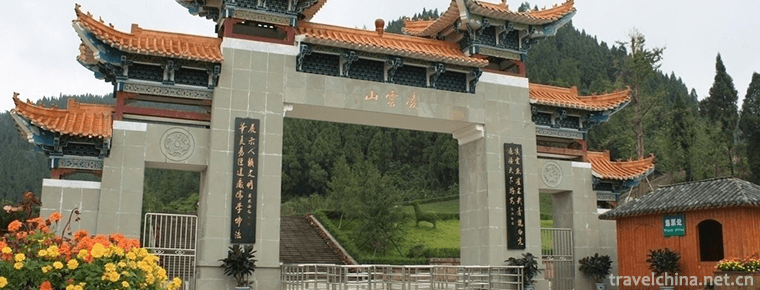
-
Boiled Chinese flowering cabbage
Boiled cabbage is a traditional dish in Guangdong province. It is a Cantonese cuisine. This dish is crisp and tender in quality, unique in flavor and rich in nutrition. .
Views: 137 Time 2018-11-02 -
ShenxianjuImmortal residence
Shenxianju, a famous ancient mountain, is also known as Weiqiang Mountain. Now it is a national 5A scenic spot. There is the title of He Shu's calyx in Qianlong period of Qing Dynasty.
Views: 211 Time 2018-12-07 -
Jianmenguan Scenic Area
Jianmenguan Scenic Area is one of the national AAAAA class tourist attractions, National Scenic spots, national key cultural relics protection units, National Forest park, national natural and cultura.
Views: 200 Time 2018-12-12 -
Songxian Tianchishan National Forest Park
The Tianchishan National Forest Park in Songxian County, Luoyang City, is located in Xionger Mountains, northwest of Songxian County, Luoyang City, with a total area of 1716 hectares and a forest cove.
Views: 133 Time 2019-02-13 -
Tianjin Polar Ocean World
Tianjin Polar Ocean World is a theme park invested by Dalian Haichang Group in Tianjin. Tianjin Polar Ocean World is a large-scale open tourism project with the theme of Ocean Park.
Views: 217 Time 2019-02-21 -
Baling Opera
Baling Opera, a local traditional drama in Yueyang City, Hunan Province, is one of the national intangible cultural heritage..
Views: 161 Time 2019-04-02 -
Lantern Dance
Lantern dance is a Chinese folk dance with a long history. It has been performed mainly on Lantern Festival for at least 1,000 years. Lantern dance originated from Lantern Festival and its production .
Views: 1410 Time 2019-04-26 -
Guangdong folk music
Taishan City, located in the southwest of the Pearl River Delta, is a famous home of overseas Chinese. Taishan's "Eight-tone Class" is one of the activities of Guangdong music.
Views: 217 Time 2019-05-01 -
The legend of Huang Daxian in Huangchuping
Huang Chuping's legend is one of the local folklores in Jinhua, Zhejiang Province. It originated in the Eastern Jin Dynasty. The earliest written record was in The Biography.
Views: 70 Time 2019-05-04 -
Yi Kezhi
Yi Kezhi is a popular oral literature of poetry style among the Yi people. It is the cultural accumulation formed by the Yi people in their long-term production and life, and has a very long history. .
Views: 157 Time 2019-07-12 -
National characteristics of Chinese embroidery
Nationality is the distinctive feature of Qinghai Folk Embroidery. In the long process of development, Qinghai embroidery has formed its own unique style. Due to the consistency of language, religious belief, festival etiquette, culture and entertainment,.
Views: 333 Time 2020-12-12 -
Neijiang folk culture
Bull lantern dance is popular in Yuexi. One dressed as a shepherd boy and two dressed as cattle with cow shaped props. In the sound of gongs and drums, the shepherd boy first said doggerel to the audience to express the festival's congratulations, and then .
Views: 346 Time 2020-12-16
